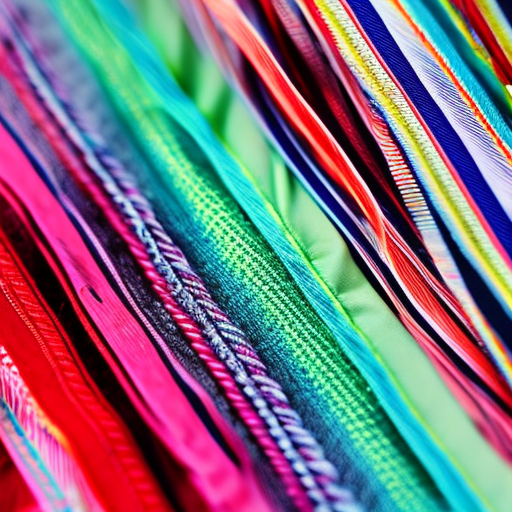
What is Sewing Thread?
Sewing thread is a thin strand of yarn that is used to stitch together fabrics, materials, or garments. It is an essential component in any sewing project and plays a critical role in determining the quality, strength, and durability of the finished garment.
Sewing threads are typically made from various materials such as cotton, polyester, nylon, or a blend of these fibers. Each type of thread has its own characteristics and is suitable for specific sewing applications.

Importance of Sewing Thread
The choice of sewing thread can significantly impact the overall quality and longevity of a garment. Here are a few reasons why sewing thread is crucial:
- Strength and durability: Sewing thread should be strong enough to withstand regular wear and tear. It ensures that the seams hold up well and do not break easily.
- Appearance: The thread color, thickness, and texture can all affect the visual appeal of the garment. The right thread helps create a neat and professional finish.
- Functionality: Different sewing projects require specific thread properties, such as elasticity for stretchy fabrics or resistance to abrasion for heavy-duty materials.
- Compatibility: Choosing a suitable thread ensures that it works well with the fabric, sewing machine, and needle being used. This prevents issues like skipped stitches or tension problems.
Types of Sewing Thread
There are various types of sewing threads available, each with its own unique characteristics.
Cotton Thread:
Cotton thread is a natural option that is versatile and easy to work with. It is commonly used for lightweight and medium-weight fabrics or decorative stitching.
Polyester Thread:
Polyester thread is known for its strength, durability, and resistance to mildew and wrinkles. It is suitable for a wide range of fabrics and can withstand high-speed sewing.
Nylon Thread:
Nylon thread is incredibly strong, making it ideal for heavy-duty projects like sewing leather or upholstery. It offers excellent abrasion resistance and remains stable under intense sewing conditions.

Choosing the Right Sewing Thread
When selecting a sewing thread, consider the following factors:
- Fiber content of the fabric
- Type of sewing project
- Desired durability
- Color coordination with the fabric
- Machine compatibility
It is crucial to choose a thread that complements the fabric and stitching requirements to ensure a successful and long-lasting outcome.
In Conclusion
Sewing thread is a fundamental element in any garment construction. It not only holds the fabric pieces together but also adds strength, durability, and visual appeal to the finished product. Choosing the right type of sewing thread based on the fabric, project, and desired outcome is essential for achieving professional and long-lasting results in the world of sewing.





Great article. Very informative.
Juanita Johnson: I’m learning a lot!
This is a great article that covers all the basics of using sewing thread in garments. Very helpful for sewists of all levels! #sewingthread #garmentsewing
Such great information! It’s very helpful and I’m sure it will be useful for many people. #sewingthread #garmentsewing
Very useful tips! I’m sure this will help plenty of people to learn and perfect their craft. #sewingthread #garmentsewing
I totally agree! Easy to follow instructions and great tips. Sewing has never been easier. #sewingthread #garmentsewing